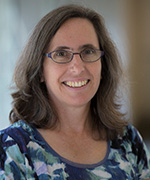Stomach cancer
The stomach is a J-shaped organ in the upper abdomen. It is part of the digestive system, which processes nutrients (vitamins, minerals, carbohydrates, fats, proteins, and water) in foods that are eaten and helps pass waste material out of the body. Food moves from the throat to the stomach through a hollow, muscular tube called the esophagus. After leaving the stomach, partly-digested food passes into the small intestine and then into the large intestine.
The wall of the stomach is made up of 3 layers of tissue: the mucosal (innermost) layer, the muscularis (middle) layer, and the serosal (outermost) layer. Gastric cancer begins in the cells lining the mucosal layer and spreads through the outer layers as it grows.
Stromal tumors of the stomach begin in supporting connective tissue and are treated differently from gastric cancer.

Physical exam and history: An exam of the body to check general signs of health, including checking for signs of disease, such as lumps or anything else that seems unusual. A history of the patient’s health habits and past illnesses and treatments will also be taken.
Blood chemistry studies: A procedure in which a blood sample is checked to measure the amounts of certain substances released into the blood by organs and tissues in the body. An unusual (higher or lower than normal) amount of a substance can be a sign of disease in the organ or tissue that produces it.
Complete blood count (CBC): A procedure in which a sample of blood is drawn and checked for the following:
- The number of red blood cells, white blood cells, and platelets
- The amount of hemoglobin (the protein that carries oxygen) in the red blood cells
- The portion of the sample made up of red blood cells
Upper endoscopy: A procedure to look inside the esophagus, stomach, and duodenum (first part of the small intestine) to check for abnormal areas. An endoscope (a thin, lighted tube) is passed through the mouth and down the throat into the esophagus.
Fecal occult blood test: A test to check stool (solid waste) for blood that can only be seen with a microscope. Small samples of stool are placed on special cards and returned to the doctor or laboratory for testing.
Barium swallow: A series of x-rays of the esophagus and stomach. The patient drinks a liquid that contains barium (a silver-white metallic compound). The liquid coats the esophagus and stomach, and x-rays are taken. This procedure is also called an upper GI series.
Biopsy: The removal of cells or tissues so they can be viewed under a microscope to check for signs of cancer. A biopsy of the stomach is usually done during the endoscopy.
CT scan (CAT scan): A procedure that makes a series of detailed pictures of areas inside the body, taken from different angles. The pictures are made by a computer linked to an x-ray machine. A dye may be injected into a vein or swallowed to help the organs or tissues show up more clearly. This procedure is also called computed tomography, computerized tomography, or computerized axial tomography.
Sources: National Cancer Institute and UC Davis Comprehensive Cancer Center
-
Indigestion and stomach discomfort
- A bloated feeling after eating
- Mild nausea
- Loss of appetite
- Heartburn
In more advanced stages of gastric cancer, the following symptoms may occur:
- Blood in the stool
- Vomiting
- Weight loss for no known reason
- Stomach pain
- Jaundice (yellowing of eyes and skin)
- Ascites (build-up of fluid in the abdomen)
- Trouble swallowing
Sources: National Cancer Institute and UC Davis Comprehensive Cancer Center
- Helicobacter pylori gastric infection
- Advanced age
- Male gender
- Diet low in fruits and vegetables
- Diet high in salted, smoked, or preserved foods
- Chronic atrophic gastritis
- Intestinal metaplasia
- Pernicious anemia
- Gastric adenomatous polyps
- Family history of gastric cancer
- Cigarette smoking
- Menetrier disease (giant hypertrophic gastritis)
- Familial adenomatous polyposis
Sources: National Cancer Institute and UC Davis Comprehensive Cancer Center
Surgery
Surgery is a common treatment of all stages of gastric cancer. The following types of surgery may be used:
- Subtotal gastrectomy: Removal of the part of the stomach that contains cancer, nearby lymph nodes, and parts of other tissues and organs near the tumor. The spleen may be removed. The spleen is an organ in the upper abdomen that filters the blood and removes old blood cells.
- Total gastrectomy: Removal of the entire stomach, nearby lymph nodes, and parts of the esophagus, small intestine, and other tissues near the tumor. The spleen may be removed. The esophagus is connected to the small intestine so the patient can continue to eat and swallow.
If the tumor is blocking the stomach but the cancer cannot be completely removed by standard surgery, the following procedures may be used:
- Endoluminal stent placement: A procedure to insert a stent (a thin, expandable tube) in order to keep a passage (such as arteries or the esophagus) open. For tumors blocking the passage into or out of the stomach, surgery may be done to place a stent from the esophagus to the stomach or from the stomach to the small intestine to allow the patient to eat normally.
- Endoluminal laser therapy: A procedure in which an endoscope (a thin, lighted tube) with a laser attached is inserted into the body. A laser is an intense beam of light that can be used as a knife.
Chemotherapy
Chemotherapy is a cancer treatment that uses drugs to stop the growth of cancer cells, either by killing the cells or by stopping them from dividing. When chemotherapy is taken by mouth or injected into a vein or muscle, the drugs enter the bloodstream and can reach cancer cells throughout the body (systemic chemotherapy). When chemotherapy is placed directly into the spinal column, an organ, or a body cavity such as the abdomen, the drugs mainly affect cancer cells in those areas (regional chemotherapy). The way the chemotherapy is given depends on the type and stage of the cancer being treated.
Radiation therapy
Radiation therapy is a cancer treatment that uses high-energy x-rays or other types of radiation to kill cancer cells or keep them from growing. There are two types of radiation therapy. External radiation therapy uses a machine outside the body to send radiation toward the cancer. Internal radiation therapy uses a radioactive substance sealed in needles, seeds, wires, or catheters that are placed directly into or near the cancer. The way the radiation therapy is given depends on the type and stage of the cancer being treated.
Chemoradiation
Chemoradiation combines chemotherapy and radiation therapy to increase the effects of both. Chemoradiation treatment given after surgery to increase the chances of a cure is called adjuvant therapy. If it is given before surgery, it is called neoadjuvant therapy.
UC Davis Comprehensive Cancer Center has a large clinical trials network. New types of stomach cancer treatment are being tested here, offering our patients access to the newest drugs and therapies before they become widely available.
Sources: National Cancer Institute and UC Davis Comprehensive Cancer Center
Gastroenterology
 Shiro Urayama, M.D.
Shiro Urayama, M.D.
Professor of Medicine, Gastroenterology
Hematology and Oncology
 Edward Kim, M.D., Ph.D.
Edward Kim, M.D., Ph.D.
Associate Professor of Internal Medicine, Hematology and Oncology
 Kit Tam, M.D.
Kit Tam, M.D.
Assistant Professor of Internal Medicine, Hematology and Oncology
 Rashmi Verma, M.D.
Rashmi Verma, M.D.
Assistant Health Science Clinical Professor
Surgical Oncology
 Robert J. Canter, M.D.
Robert J. Canter, M.D.
Chief of Surgical Oncology
Professor of Surgery
 Cameron Gaskill, M.D., M.P.H.
Cameron Gaskill, M.D., M.P.H.
Assistant Professor of Surgery
Diagnostic Radiology
 John P. McGahan, M.D.
John P. McGahan, M.D.
Professor of Radiology
Chief of Abdominal Imaging and Ultrasound
Radiation Oncology
 Arta Monjazeb, M.D., Ph.D.
Arta Monjazeb, M.D., Ph.D.
Associate Professor
Dietitians
 Danielle Baham, M.S., R.D.
Danielle Baham, M.S., R.D.
 Kathleen Newman, R.D., C.S.O.
Kathleen Newman, R.D., C.S.O.
Genetic Counselors
Social Workers
 Sara Chavez, L.C.S.W., O.S.W.-C., A.C.H.P.-S.W.
Sara Chavez, L.C.S.W., O.S.W.-C., A.C.H.P.-S.W.
 Sarah Conning, L.C.S.W., O.S.W.-C.
Sarah Conning, L.C.S.W., O.S.W.-C.





 Nicole Mans, M.S., L.C.G.C.
Nicole Mans, M.S., L.C.G.C. Jeanna Welborn, M.D.
Jeanna Welborn, M.D.